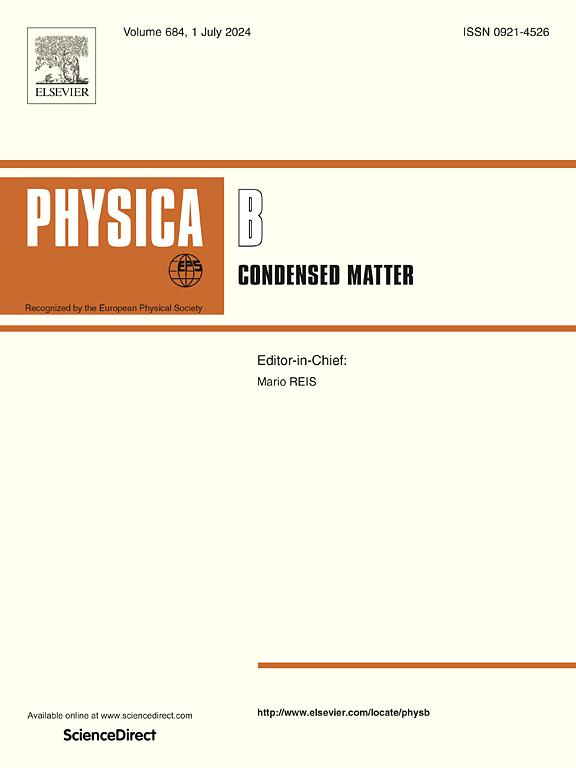Investigation of rare earth metal ions (Sm and Er) doped CoMoO4 polymorphs for photocatalytic dye degradation
IF 2.8
3区 物理与天体物理
Q2 PHYSICS, CONDENSED MATTER
引用次数: 0
Abstract
Cobalt molybdate (CoMoO4) and its rare earth doped variants have emerged as promising photocatalysts for degrading dye pollutants in wastewater. The photocatalysts were prepared using a modified sol-gel method, employing ammonium heptamolybdate tetrahydrate and cobalt (II) nitrate hexahydrate as precursors. The incorporation of samarium and erbium as a dopant was hypothesized to improve the photocatalytic activity of CoMoO4 by altering its band structure and creating defect sites for improved dye adsorption and degradation. The structural and optical properties of the synthesized photocatalysts were characterized using various techniques. The photocatalytic performance of CoMoO4, Sm:CoMoO4 and Er:CoMoO4 was evaluated by monitoring the degradation of MB dye under light irradiation. The results reveal that Sm:CoMoO4 and Er:CoMoO4 catalysts achieve a degradation efficiencies of 99 % and 97 %, respectively, highlighting the potential of rare earth-doped CoMoO4 as an efficient photocatalyst for the remediation of dye contaminated wastewater.
掺杂稀土金属离子(Sm 和 Er)的 CoMoO4 多晶体光催化染料降解研究
钼酸钴(CoMoO4)及其掺杂稀土的变体已成为降解废水中染料污染物的有前途的光催化剂。这些光催化剂采用改良的溶胶-凝胶法,以四水七钼酸铵和六水硝酸钴 (II) 为前驱体进行制备。掺入钐和铒作为掺杂剂,可以改变 CoMoO4 的能带结构,产生缺陷位点,从而改善染料的吸附和降解,从而提高其光催化活性。利用各种技术对合成光催化剂的结构和光学特性进行了表征。通过监测光照射下 MB 染料的降解情况,评估了 CoMoO4、Sm:CoMoO4 和 Er:CoMoO4 的光催化性能。结果表明,Sm:CoMoO4 和 Er:CoMoO4 催化剂的降解效率分别达到 99% 和 97%,凸显了稀土掺杂 CoMoO4 作为高效光催化剂修复染料污染废水的潜力。
本文章由计算机程序翻译,如有差异,请以英文原文为准。
求助全文
约1分钟内获得全文
求助全文
来源期刊

Physica B-condensed Matter
物理-物理:凝聚态物理
CiteScore
4.90
自引率
7.10%
发文量
703
审稿时长
44 days
期刊介绍:
Physica B: Condensed Matter comprises all condensed matter and material physics that involve theoretical, computational and experimental work.
Papers should contain further developments and a proper discussion on the physics of experimental or theoretical results in one of the following areas:
-Magnetism
-Materials physics
-Nanostructures and nanomaterials
-Optics and optical materials
-Quantum materials
-Semiconductors
-Strongly correlated systems
-Superconductivity
-Surfaces and interfaces
 求助内容:
求助内容: 应助结果提醒方式:
应助结果提醒方式:


